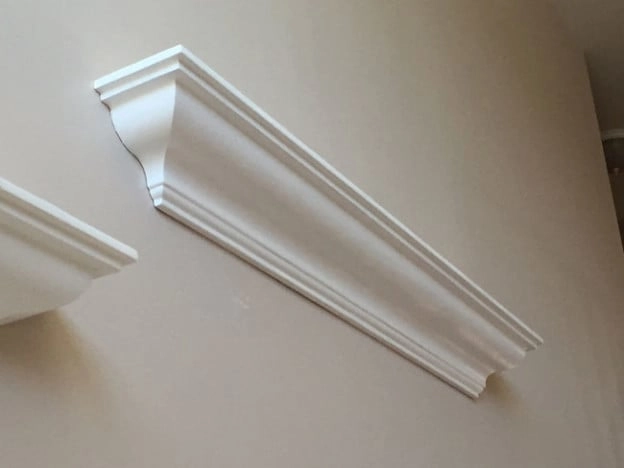
What Is Styrofoam Molding Uses and Advantages
Styrofoam molding is a popular material used in various construction, design, and DIY projects. Known for its versatility, lightweight properties, and affordability, Styrofoam is often utilized in the creation of moldings, trim, and decorative features. This material offers a combination of aesthetic appeal, functionality, and ease of use, making it a go-to choice for homeowners, builders, and designers alike. In this blog, we’ll explore the uses and advantages of Styrofoam molding, highlighting why it continues to be a preferred material for numerous applications.
What Is Styrofoam Molding?
Styrofoam molding is a type of molding made from expanded polystyrene foam (EPS), a lightweight, durable, and easily shaped material. It’s produced by heating and expanding polystyrene beads into foam, which are then molded into various shapes and designs. This material can be cut, shaped, and painted to suit a wide range of decorative and functional needs.
Styrofoam molding is most commonly used in ceiling moldings, crown moldings, trim work, and other architectural elements. It is often seen in both residential and commercial spaces, adding an elegant finish to any room. Thanks to its lightweight nature, Styrofoam molding can be easily handled and installed, making it a favorite among DIY enthusiasts.
Uses of Styrofoam Molding
- Ceiling and Crown Moldings: Styrofoam molding is frequently used for crown moldings in both modern and traditional interiors. It helps transition walls to ceilings seamlessly, adding a polished and refined look to a room. Because of its ability to mimic more expensive materials like wood, Styrofoam crown molding offers an elegant finish at a fraction of the cost.
- Decorative Trim: Styrofoam molding can also be used as trim around windows, doors, and baseboards. It enhances the look of any space by framing these architectural features with clean, crisp lines. Additionally, Styrofoam trim comes in various designs, including modern, classical, or intricate styles.
- Architectural Elements: Styrofoam molding is often used to create decorative architectural elements like columns, archways, and pediments. It can be molded into almost any shape, making it a versatile solution for adding stylish accents to a space. Designers use Styrofoam for creating detailed and artistic features that would be costly or difficult to achieve using traditional materials like plaster or concrete.
- Exterior Applications: Due to its durability and lightweight nature, Styrofoam molding is also used in exterior applications. It can be applied to stucco or other siding materials, providing a decorative touch while being weather-resistant. Exterior Styrofoam trim can give homes a high-end look, often resembling stone or plaster without the weight or expense.
- Craft and DIY Projects: Styrofoam molding is an excellent material for DIY and craft projects. Whether it’s for creating custom furniture details or making small-scale replicas, Styrofoam is easy to work with and allows for precision cutting and shaping.
Advantages of Styrofoam Molding
- Lightweight: One of the most significant advantages of Styrofoam molding is its light weight. This makes it easier to handle, transport, and install compared to heavier materials like wood, stone, or plaster. It also reduces the strain on walls and ceilings, especially when dealing with large or intricate designs.
- Cost-Effective: Styrofoam is much more affordable than traditional molding materials. Whether you’re working with a tight budget or looking to complete a large project at a reasonable price, Styrofoam molding offers a budget-friendly solution without compromising on style.
- Easy to Install: Styrofoam molding can be installed with simple adhesives or glue, eliminating the need for complex tools or specialized skills. This makes it an ideal material for DIY enthusiasts and homeowners who want to tackle their own renovation projects. Its lightweight nature also makes it easier to handle during the installation process.
- Customization and Versatility: Styrofoam molding is highly customizable. It can be shaped into a wide range of designs, from simple and modern lines to intricate, detailed patterns. This flexibility allows it to fit a variety of architectural styles and aesthetic preferences. Additionally, Styrofoam molding can be easily painted to match the color scheme of a room, further enhancing its versatility.
- Durability: Despite its lightweight nature, Styrofoam is durable and resistant to wear and tear. It is resistant to moisture, rot, and insects, ensuring it remains in good condition over time. For exterior applications, Styrofoam moldings are often treated with additional coatings to make them even more resistant to the elements.
- Sustainability: Styrofoam is a recyclable material, and when used in molding, it helps reduce waste and minimizes environmental impact. Many manufacturers now offer eco-friendly Styrofoam options, providing an environmentally conscious choice for those looking to enhance their interiors without harming the planet.
- Quick Drying: When using Styrofoam molding for installation, the adhesive or glue used for fixing it in place dries quickly, allowing you to finish your project in less time. This means less waiting and faster results, which is especially beneficial for large-scale projects or time-sensitive renovations.
- Aesthetic Appeal: Styrofoam molding can mimic the appearance of more expensive materials, such as wood or stone, providing an elegant and high-end look without the associated costs. It is available in various styles, including classic, contemporary, and ornate designs, giving homeowners flexibility in achieving their desired aesthetic.
- Maintenance-Free: Styrofoam molding is easy to maintain. Unlike wood or metal, it does not require frequent polishing or upkeep. Once installed and painted, Styrofoam moldings can maintain their appearance for many years with minimal care.
Conclusion
Styrofoam molding is a highly versatile and cost-effective option for anyone looking to enhance their home’s interior or exterior. Whether you’re looking to add a decorative crown molding to your ceiling, trim for your windows and doors, or exterior accents to your stucco finish, Styrofoam molding offers a durable, lightweight, and affordable solution. With its wide range of styles, ease of installation, and low-maintenance benefits, Styrofoam molding is an ideal choice for both professionals and DIY enthusiasts.